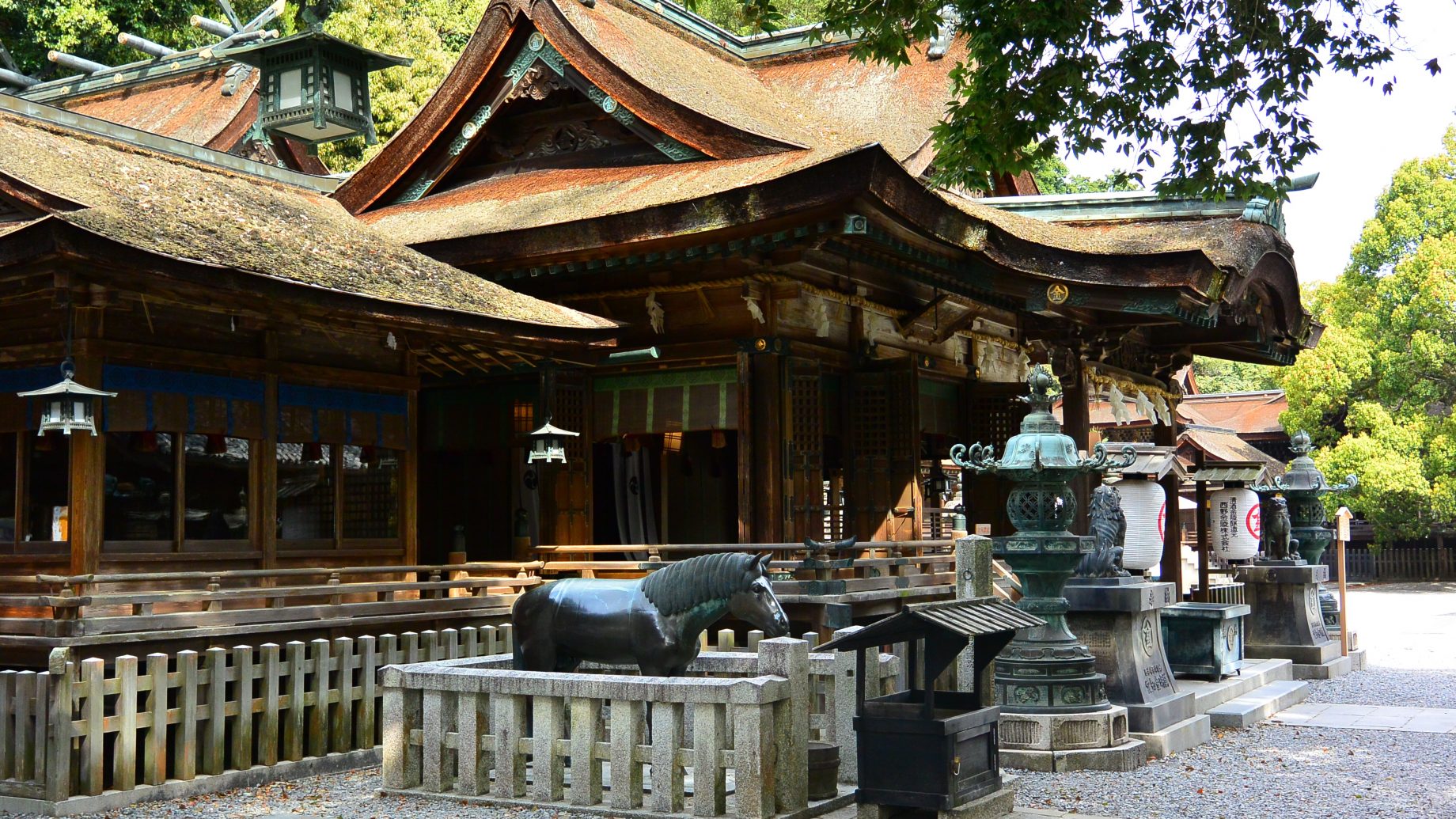Having completed our Shikoku 88 Temple pilgrimage walk yesterday, we decided a leisurely start to the day today was an appropriate reward for our recent days of challenging walks. We asked for our breakfast to be ready at around 8.00am, which gave us a chance to sleep in a bit. The breakfast was a delight to look at and very tasty to consume. We learnt that the husband did all the cooking in our ryokan, while his wife managed front of house and cleaning.
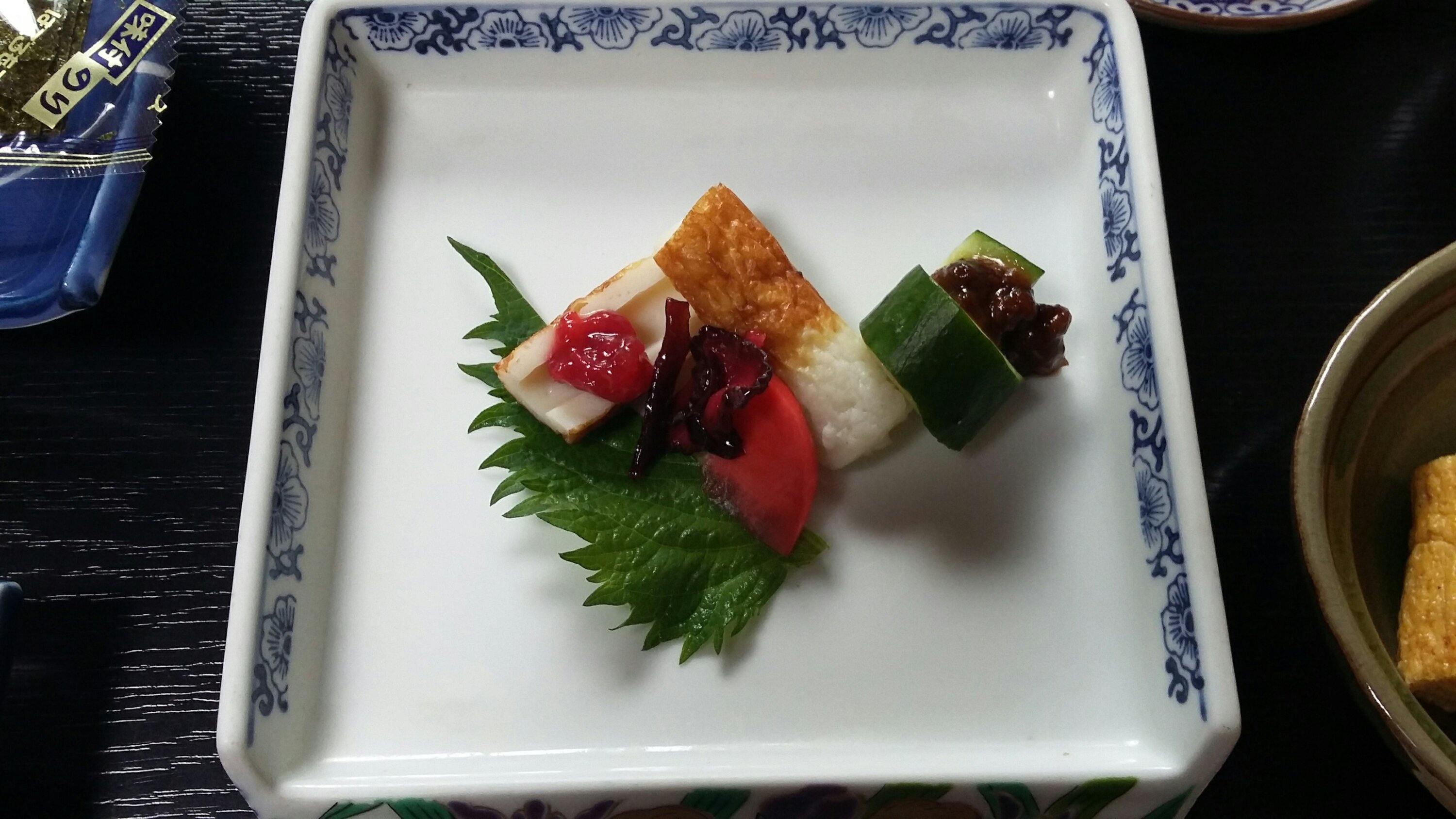
Following breakfast we set off for some sightseeing, before catching a series of interconnecting trains to our overnight accommodation in Osaka. Kotohira is famous for a temple built in the 17th century that purports to bring good luck to seafarers. What wasn’t apparent when we set out to visit the temple complex is that it sits up a mountain, some 768 steps above the township.
On leaving our ryokan we crossed a small river that bisects the township, before entering a narrow street lined with shops selling a variety of tourist trinkets as well as food and drinks. The town is also famous for the excellent udon noodles made locally and served in many of the cafes and restaurants lining the walk to the temple.

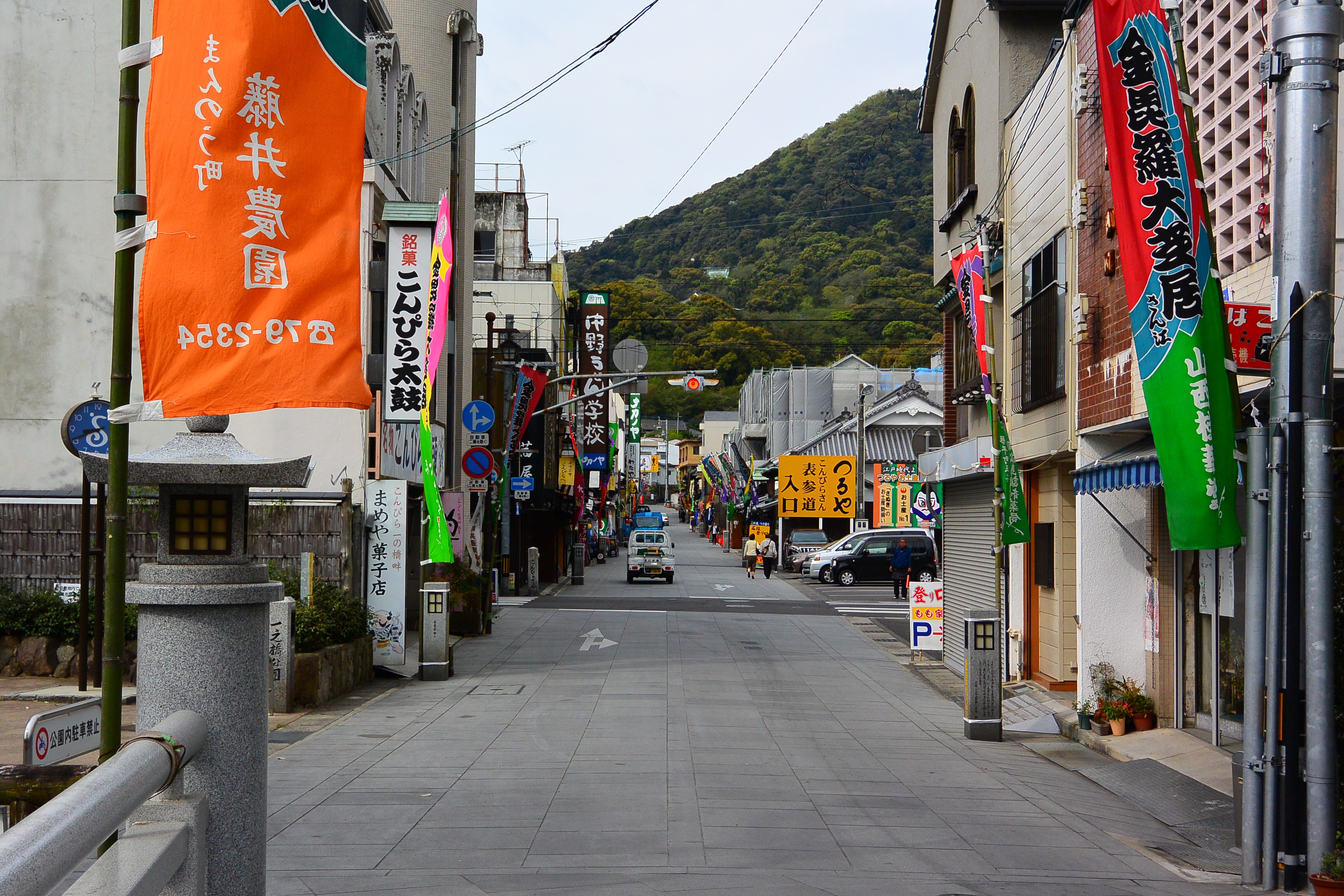
Our timing was good, as we appeared to have a jump on the tourist groups heading to the temple. The streets were relatively empty and we weren’t dodging people as we started the climb. At first it was easy going – a couple of stairs, followed by a flat section, before more stairs – all on a gradual incline. Eventually the stairs became more frequent with less flat sections in between and the gradient got progressively steeper.
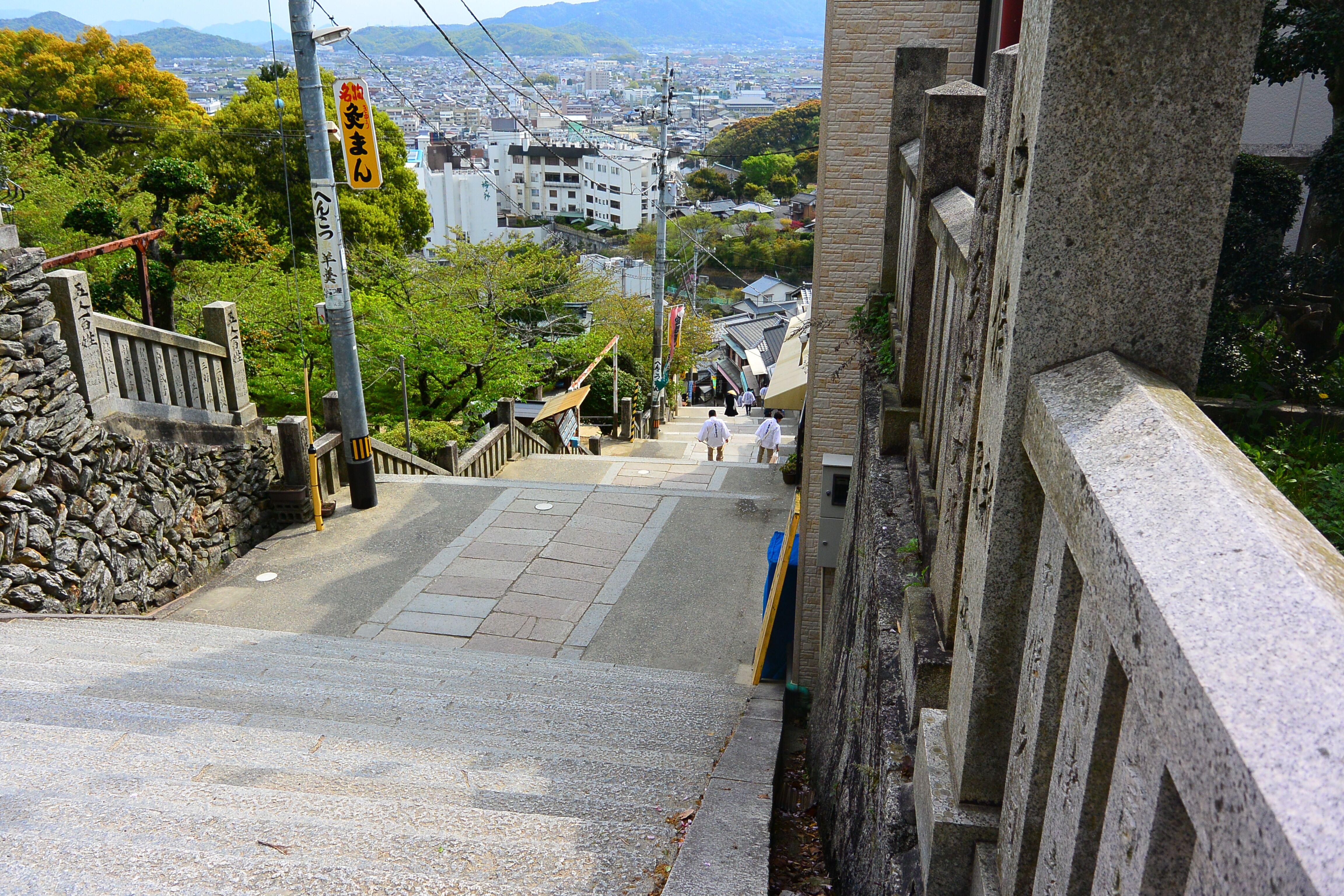
Our hopes that the stairs were coming to an end when we sighted the temple were dashed when the temple turned out to be the entrance to the temple complex and nothing more. We pushed on (at a reduced pace) with more frequent recovery stops – or, as Chris says, “time to take another photo”.
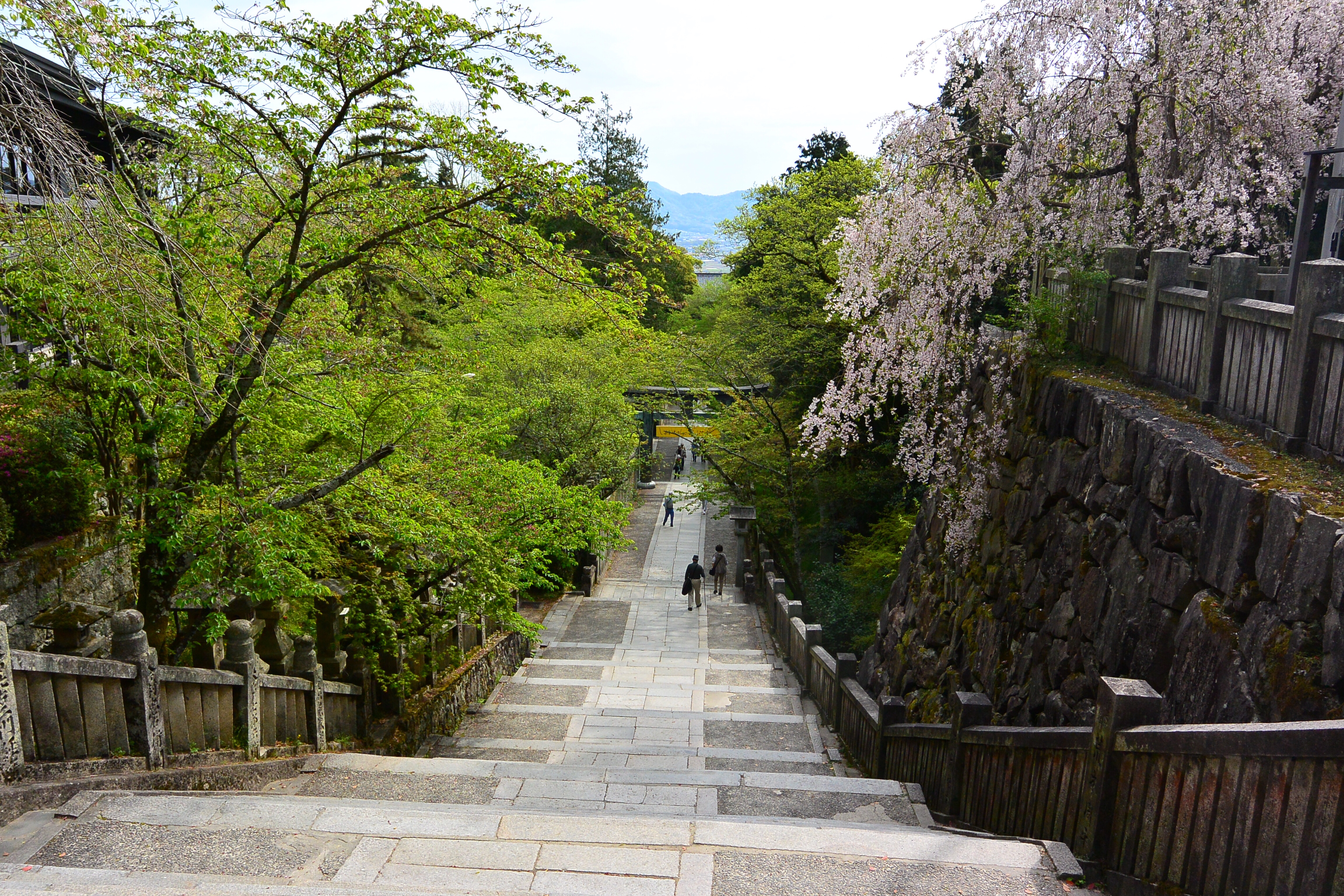
The stairs followed the contour of the steep hillside so it was impossible to get a sense of how far it was to the temple at the top. Smaller temples were scattered through the grounds that continued to raise hope that we were nearing the top. Eventually we did make it to the top, with a sense of achievement that we had gone the distance and not wavered when our leg muscles were burning and our breathing rapid.
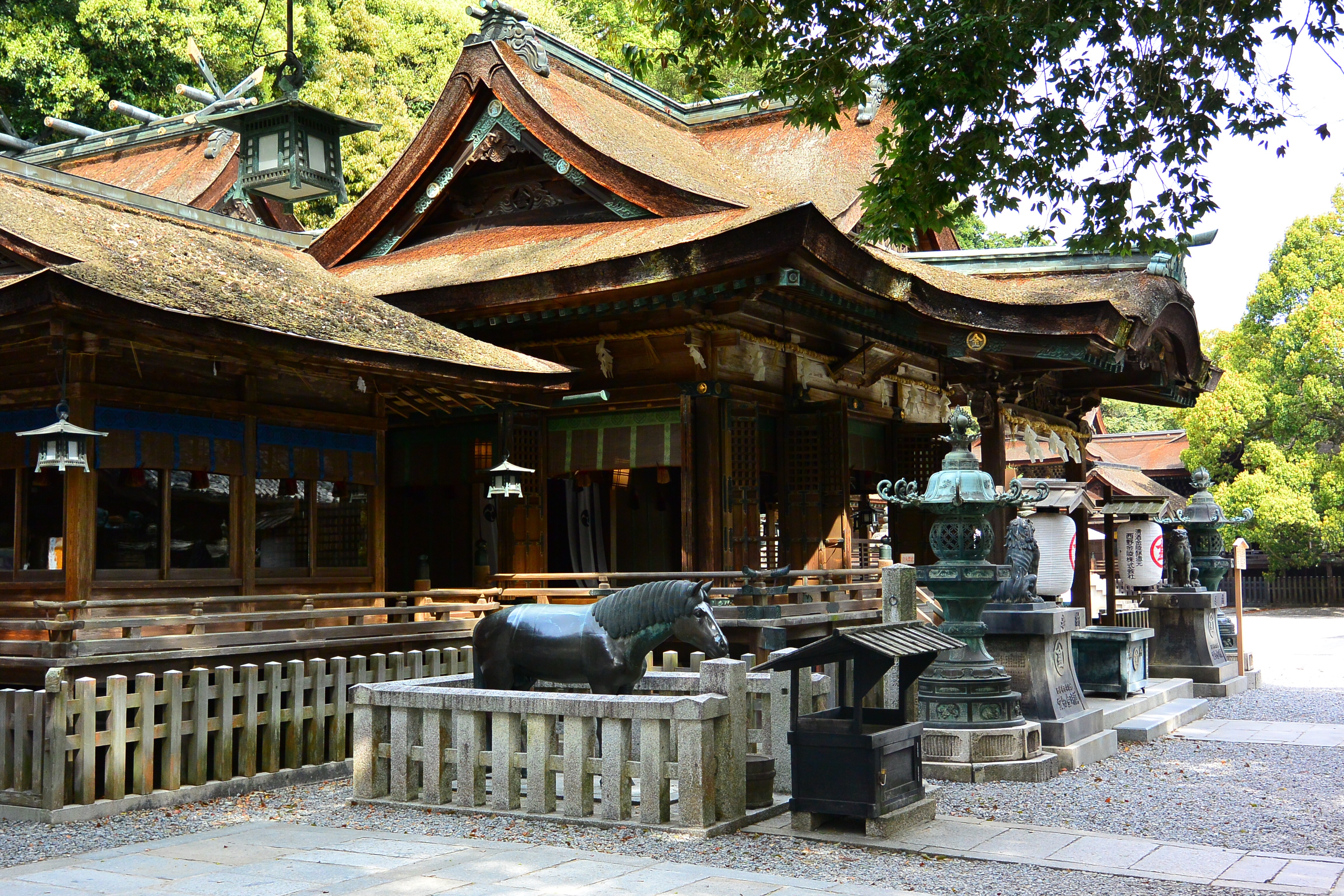
A horse statue in front of the main temple was apparently symbolic of messages being delivered to the gods. Our message may have been along the lines of installing an escalator to get to the temple – although the stairs are apparently no deterrent for the faithful, with over 4 million visitors a year passing through the complex.
We enjoyed the views out over the township below, to Japan’s inland sea to the north, and to mountains to the south east. Members of a tour group were taking in the views and queuing to have their guide snap a shot of them standing near the temple. We thought we would test our luck and joined the queue. The guide obliged, resulting in our first photo together on this trip.
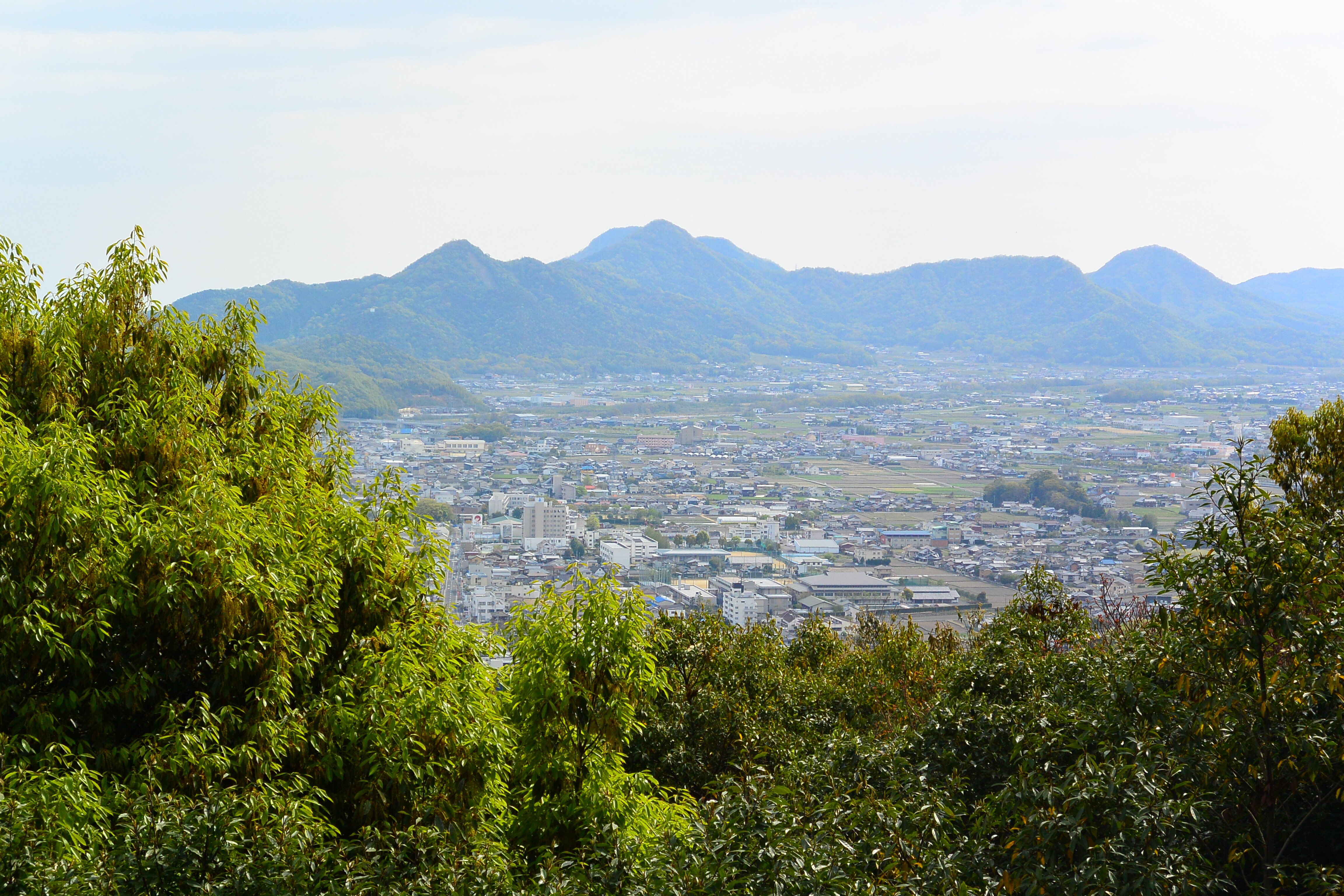
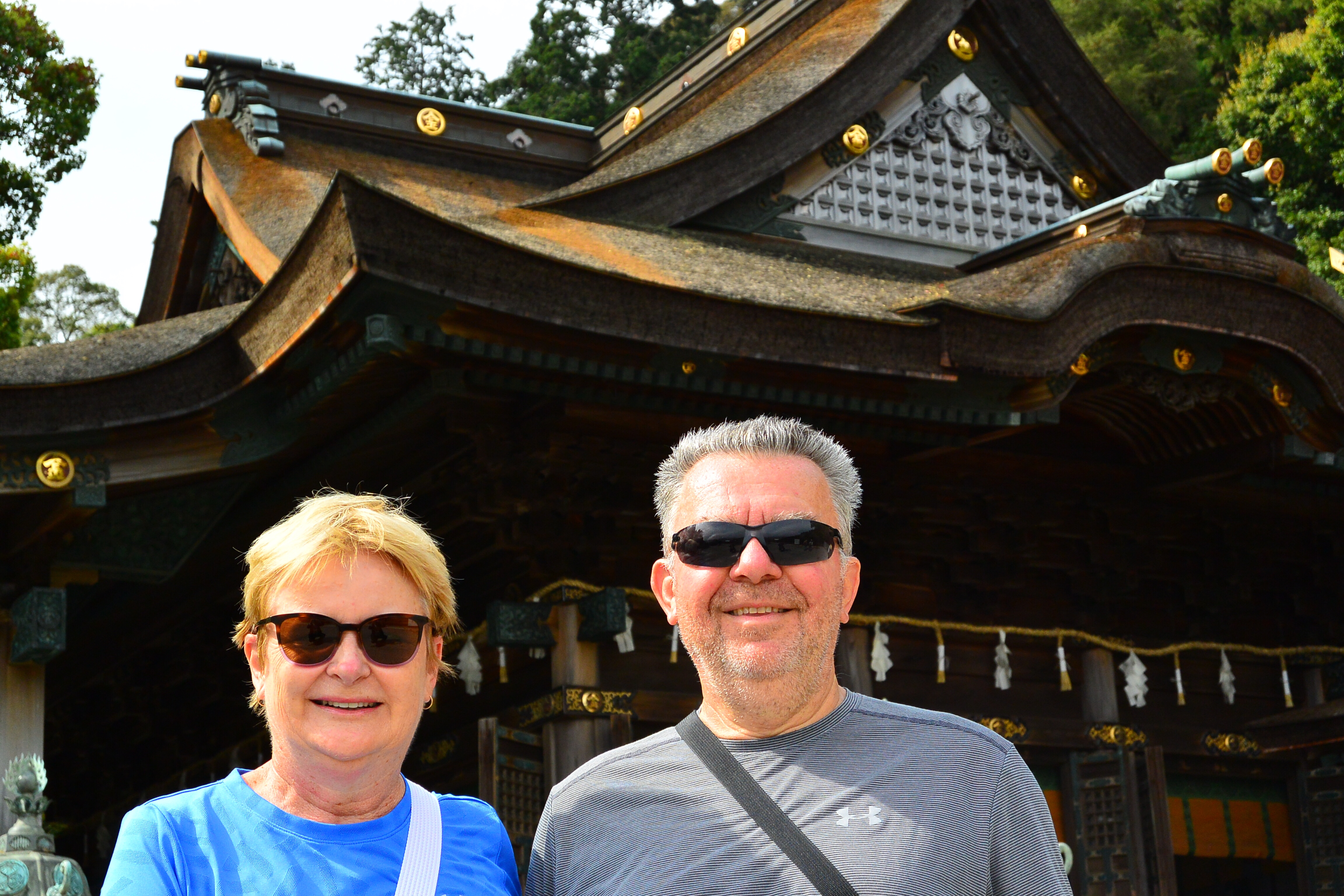
We returned to the township below the temple via the same steps we had recently climbed. The aerobics weren’t tested nearly as much on the way down, but new leg muscles were extensively “exercised” on the return journey. We detoured to inspect Japan’s tallest lantern – built hundreds of years ago, and at 27 metres high apparently able to be seen by passing ships in order to help them navigate this part of the inland sea.
We retrieved our backpacks from the ryokan and headed to the station for our train which would connect us with the shinkansen to Shin-Osaka Station. Fields of bright green rice rushed by as we journeyed north, crossing the enormous suspension bridge that joins the mainland to Shikoku Island. A quick connect with the shinkansen had us on board and moving at a great clip into Osaka.
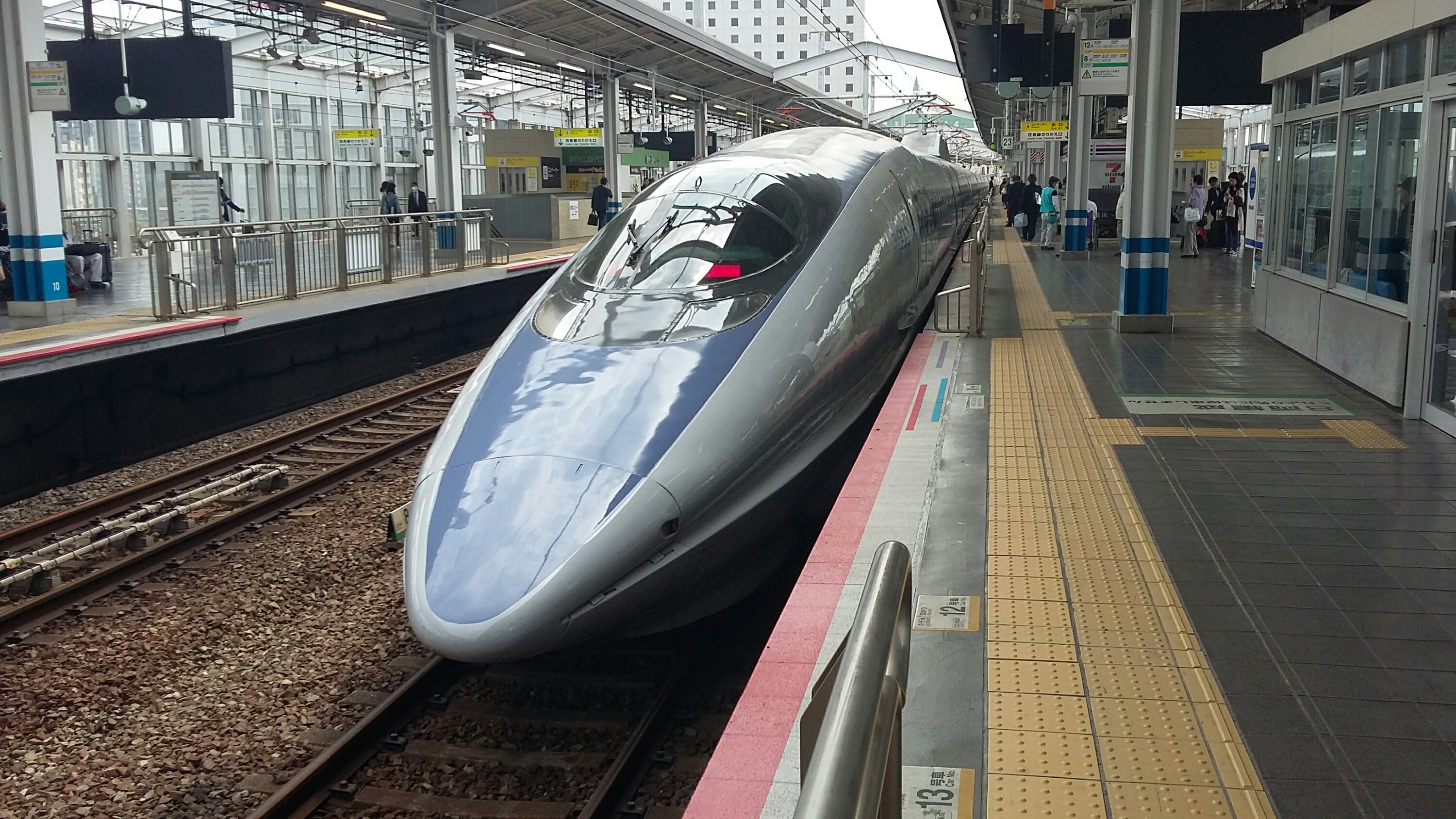
Navigating the underground network of walkways, train stations and shops has been an experience, but we are slowly getting better at finding our way. Our hotel for the night is directly above the station – 32 floors above, although the notion of a view was dampened by the permanent white haze (smog) that lingers and reduces visibility to a few kilometres at best.
We had read somewhere that okonomiyaki was one of the culinary specialties that we should try while in town. It wasn’t long before we had found a restaurant that did nothing but okonomiyaki in all manner of variations – some with prawns, others with beef and yet others that included a combination of prawns, octopus and bacon or a combination of vegetables.
The okonomiyaki we ordered were cooked on the hot plate recessed into our dining table by a pleasant waitress who had command of some English (but only some). The meal was well received as we had skipped lunch and were quite hungry after our temple challenge earlier in the day.
Tomorrow we head south to Koya-san, an active monastic centre with World Heritage status founded 12 centuries ago by our old friend Kōbō Daishi.
